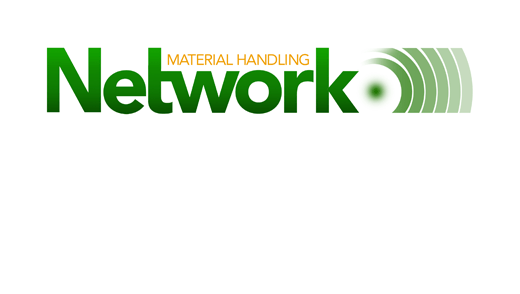Published May 22, 2020
The impact of COVID-19 was massive, surprising and abrupt. A huge percentage of the global population was in shock and on lockdown. Unemployment soared and the wind of uncertainty swept through the lives of children in daycare centers to senior citizens in nursing homes. Federal, state and local governments sought the guidance of an unprepared public health system to cope with a pandemic no one saw coming. Doing the best they could with the available information, governments acted to close the economy. Schools, event venues, churches and non-essential businesses were closed and almost overnight the daily rush hour, school buses and sporting events disappeared. Life was put on hold, except for well-planned outings to shop for emergency supplies that we could not buy online and have delivered to our home. The governments not only stopped the economy, they pushed the pause button on everything.
Then, as the days passed the governments-with the advice of the public health system-contemplated a plan to lift the lockdown and restrictive orders. These orders came and it was discovered that while the governments could shut down businesses and allow them to reopen again, they could not order the economy to restart. The governments could turn off the light, but they could not by themselves turn the light back on. To turn the light back on, the government needs the businesses of the land to restart the economy.
My recent white paper, “Restarting the Economy: Guidance for Public and Private Leaders,” goes into detail about strategy and timing for successfully reopening businesses. If you are running a business, you need to read this paper. It will help you grasp the criticality of reinventing your business to face the “next normal.”
For the majority of people who are not running a business but rather working for one, I want you to grasp the seven reinvention imperatives and the seven requirements for success for each imperative. If you grasp these seven reinvention imperatives and corresponding requirements for success, you will be able to play an important role in helping to reopen your company and therefore helping to restart the economy.
The seven reinvention imperatives are:
The seven requirements for success for these seven imperatives are as follows:
The better you understand these imperatives and requirements, the more successful your company will be at reopening the business and responding to the next normal and beyond.
- Leadership
- Culture
- Energy
- Planning
- Innovation
- Execution
- Performance
The seven requirements for success for these seven imperatives are as follows:
- Leadership
- Integrity: Tell the truth, live the truth and honor
- Honesty: Moral character, reliable and trustworthy
- Openness: Frankness, sincerity and candidness
- Communications: Simplicity, clarity and consistency
- Perseverance: Determination, grit and resolution
- Adaptability: Optionality, flexibility and agility
- Good judge of people: Evaluate authenticity, validity and loyalty
- Culture
- Progressive: Open-minded, eager to improve and optimistic
- Alignment: Togetherness, thinking alike and working in unison
- Respect: Reverence, admiration and appreciation
- Profitable growth: Success oriented, bigger & better and creating value
- Intolerance for mediocrity: Unable to accept poor quality, performance or laziness
- Embrace diversity: Accepting uniqueness, engaging differences and unprejudiced
- Have fun: Seeking enjoyment, happiness and fulfillment
- Energy
- Passion: Strong desire, compelling enthusiasm and solid conviction
- Engagement: Emotional attachment, commitment and dedication
- Collaborative: Working together, teamwork and cooperation
- Inspiring: Stimulating, encouraging and motivational
- Aggressive: Unafraid, determined and assertive
- Optimistic: Hopeful, confident and positive
- Sense of urgency: To act promptly, decisively and without delay
- Planning
- Organizational plan: Who to occupy which positions of responsibility and authority
- Strategic plan: Envisioning the desired future and translating this vision into goals and actions
- Contingency plan: Changing the strategic direction in response to an unforeseen event
- Competitive analysis: An analysis of your competition and how your business compares
- Marketing plan: The specific actions to be taken to get customers interested in your business
- Customer acquisition plan: Defining your customers and how to attract them
- Budget plan: The financial plan for the business: revenues, cost, P&L and balance sheet
- Innovation
- Be curious: Eagerness to be informed and to understand, to have an active mind
- Slay sacred cows: To question the unquestionable, to challenge things that have always been
- Spirit of partnership: To have shared goals and cohesion, to work together and to be supportive
- Continuous improvement/transformation/reinvention: To grasp incremental improvement, step function improvement and total reinvention
- Boldness: To be brave and confident, to have no fear
- Reward innovation: Acknowledge risk taking, entrepreneurship and learning from mistakes via promotions, awards and other recognitions
- Eyes wide open: To be aware, alert and watchful without denial or anxiety
- Execution
- Priorities: The organization must agree and adhere to priorities-do now, do next and do later
- Accountability: Clear accountabilities and responsibilities must be understood
- Strong metrics: Having clearly defined business metrics and goals that are meticulously tracked
- Responsive: Providing feedback/responses quickly
- Disciplined: Performing in a controlled and orderly manner, fulfilling expectations
- Maintain deadlines: Proactively tracking and responding to deadlines so as not to delay progress
- Decisiveness: To make decisions quickly and effectively, to minimize controversy and wasted time
- Performance
- Strong profit & loss: Ensure financial performance is consistent with budgets and expectations
- Solid cash flow/liquidity: Ensure organizational stability by maintaining adequate cash availability
- Brand strength: Monitor and enhance customer perceptions on quality, reputation and capabilities
- High customer satisfaction: Enhance customer approval and endorsement of the value you provide
- Repeat business: Customers believe in your performance and continuously return over time
- Voice of the customer: Ongoing process of capturing customers’ expectations, needs and wants
- Application of core competencies: Clear understanding of your organization’s strengths and ongoing development of these strengths
The better you understand these imperatives and requirements, the more successful your company will be at reopening the business and responding to the next normal and beyond.



